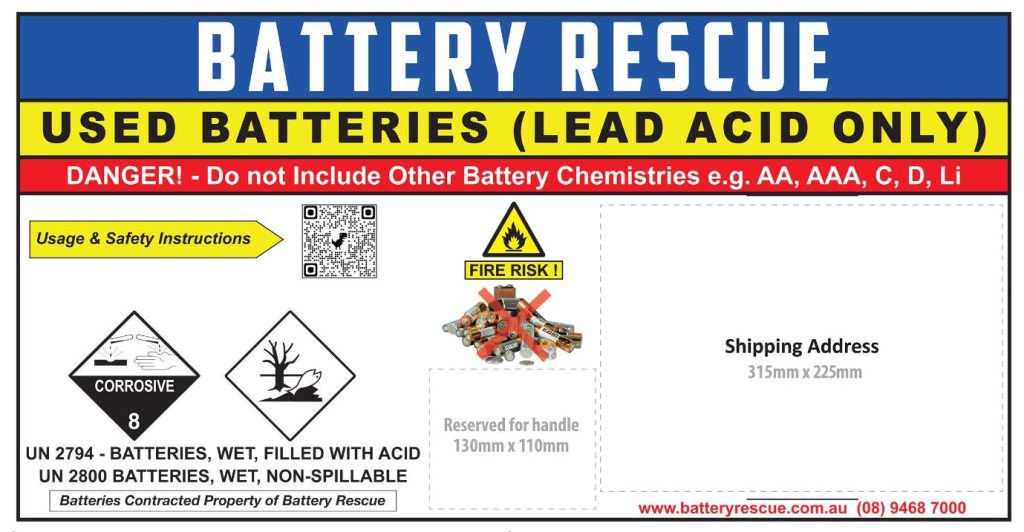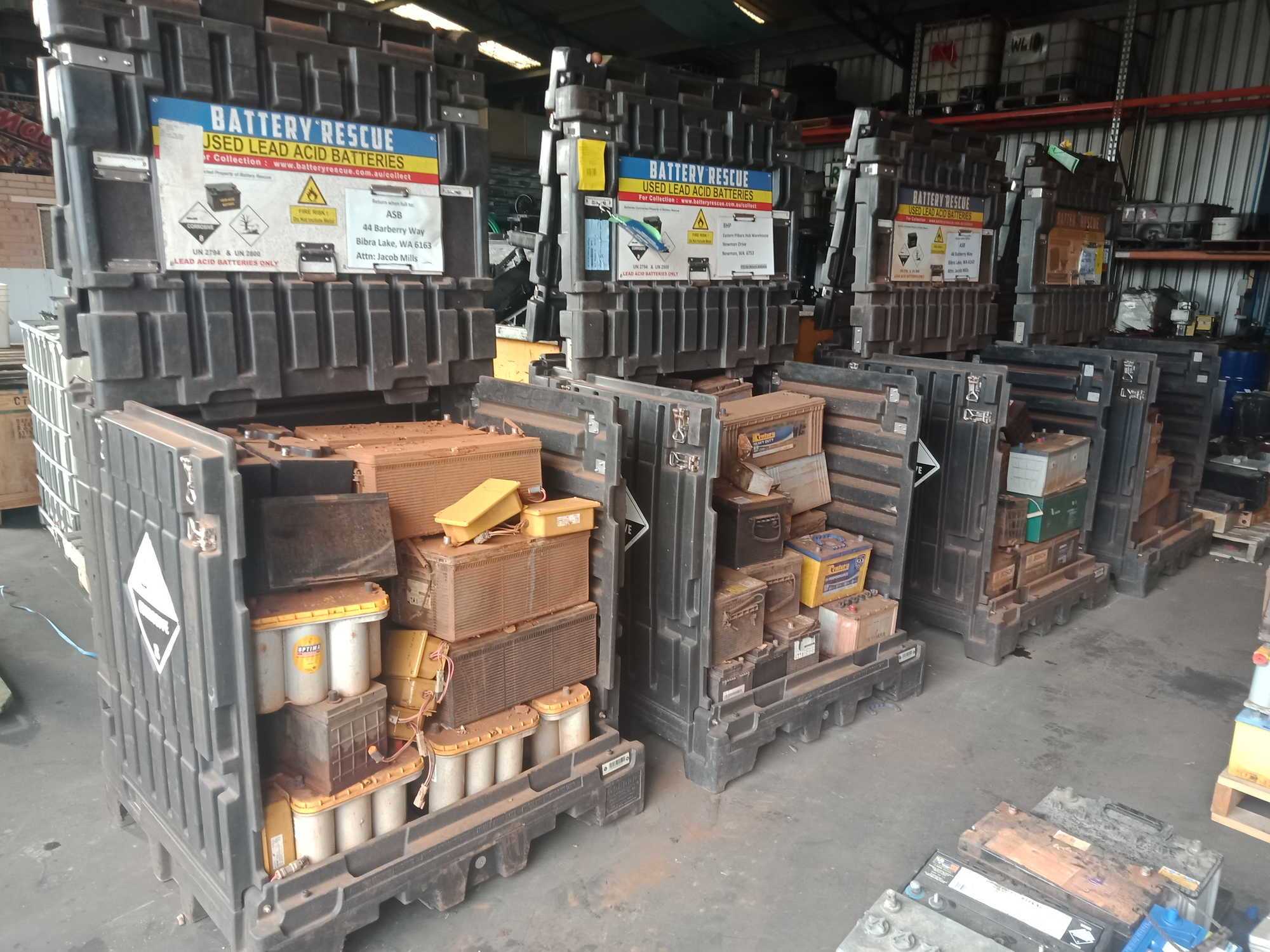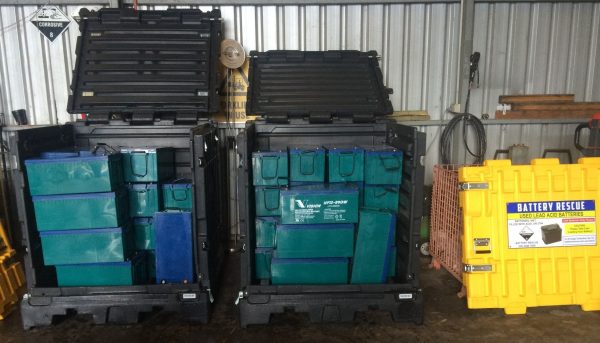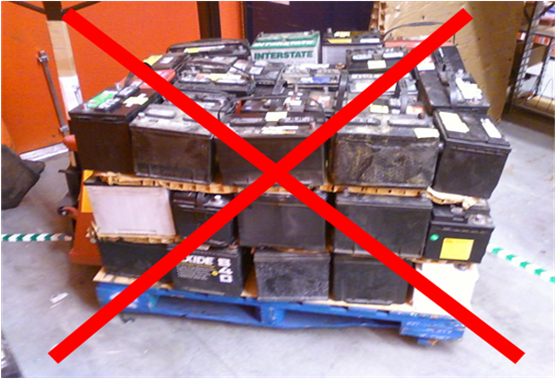Auto-Unloading of BTS Containers
The most significant development this year was the successful auto-unloading trial of batteries from our BTS Containers, at Nexus Recycling’s newly commissioned lead acid battery recycling plant. The plant is the first built in Western Australia and has a processing capacity of approximately 25,000 Tonne per annum.
Battery Rescue and its sister company, Uniseg Products, that owns the intellectual rights to the BTS Container, have been attempting for 7 years to establish a trial with an Australian Recycler, so this represents a significant milestone for the companies. The Battery Rescue system is designed to eliminate manually handling of batteries from a customer’s site to the Battery Recycling Facility. We hope that it will lead to other recyclers following suit and growth in the use of the BTS Container.
Since the successful trial in July this year, we have been busy retro fitting our BTS containers with the 2 stainless steel rods required for the auto-unloading process (see photo below). We have now almost completed upgrading our entire Metropolitan Perth fleet of containers and these are now being delivered to Nexus for unloading.

The delivery of the full BTS containers to Nexus, has required eliminating, as much as possible, battery types that are incompatible with the recycling plant. This included reducing the presence of non-lead acid batteries as well as steel case batteries and UPS (anything with additional electronics). As a result of these requirements, we are delaying the auto-unloading from the BTS containers received from our mining customers, until we are confident these requirements can be met.
To help reinforce Nexus’ requirements we have installed the following additional signage on our Perth Metro fleet of containers. More detailed instructions and photos can be found at our page “Battery Safety – Reducing Their Fire Risk“.

Expansion of Mine Site Service
Our mine site service has continued to grow in popularity with Western Australian mining companies. We have added a further 50 containers to our fleet this year bring the number of containers to nearly 200.
Our new signage, shown below, now features a QR Code which customers can scan, and they will be automatically directed to our webpages that [provide instructions on how to use the BTS Container and battery safety instructions.

The “Battery Safety – Reducing Their Fire Risks” webpage has been significantly upgraded with additional instructions and example photos on how to safely stack batteries in our BTS Containers and what types of batteries can and cannot be included in our containers.
We also created the page “Transport Documentation When Returning Full BTS Containers” to help our mine site customers with the dangerous good documentation requirements for used lead acid batteries. We have found there are frequent mistakes made describing the Packing Group and the Gross Aggregate Quantity of Dangerous Good (should be based on acid qty not battery weight). The page also includes additional transport instructions such as the dimensions and return address for the BTS Containers.
Battery Safety – a Timely Reminder
For those of us involved in the battery recycling industry we are very aware of the dangers posed by batteries. Particularly the fire risks if batteries are not handled and stored in the correct way. We received a timely reminder of their dangers recently when there was a small fire in one of our containers shipped from a mine site.
The fire was caused by the unsafe and incorrect stacking of a steel case battery on top of the underlying battery’s 2 terminals thus creating a short circuit. The resultant fire melted the rear and side panel of our BTS Container before it was extinguished.


Trial of BTS Containers versus Plastic Bins
In 2018, Battery Rescue introduced a heavy-duty plastic bin, pictured below, to our battery collection fleet. The battery bin was offered to all our customers as an alternative to the BTS Container. We wanted to test this plastic bin against the BTS Container and offered our customers a higher return for their batteries, to reflect their lower costs.
Our trail has confirmed some of our predicted concerns, such as the OSH risks present when loading heavy batteries over the sides of the bin onto the bin’s floor, but it has also highlighted additional shortcomings. The most significant are to do with meeting the regulatory requirements with transporting batteries in a plastic bin. A detailed summary of our findings is covered by our sister company, Uniseg Products’ article “Uniseg’s BTS Container vs Battery Bins”.

Growth in Demand for Lithium Battery Recycling
There has been a notable increase in companies inquiring about solutions for the safe and regulation compliant transport and disposal of larger Lithium batteries (greater than 5kg). We have extensively researched the rather complex regulatory requirements and expect to shortly announce a cost effective, practical solution for these batteries.






